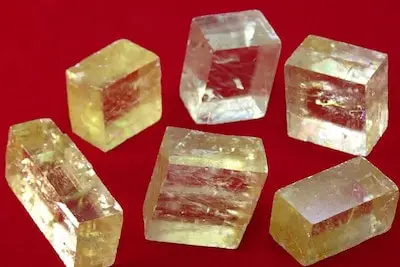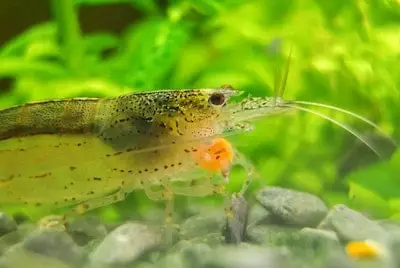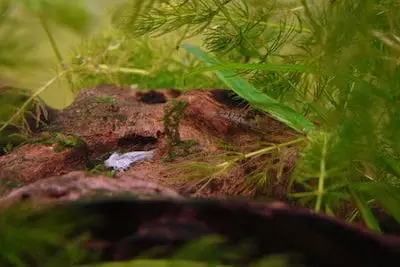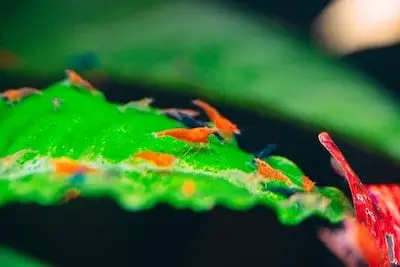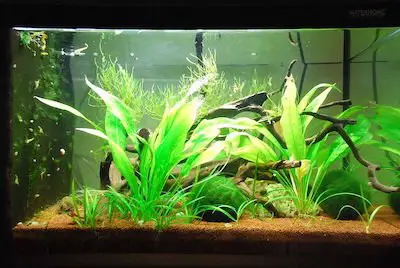What Kind of Water Do Shrimp Need? (Answered!)
Shrimp are becoming increasingly popular additions to home aquariums. But even though they’re relatively easy to keep alive in a tank, they require specific water conditions.
So before getting shrimp, it’s essential to consider the question: what kind of water do shrimp need?
Depending on the species, different shrimp have different pH requirements. Most like slightly alkaline water with a pH of 7.2. Some shrimp like acidic water with a pH of up to 7.
In all situations, you must ensure that the pH of your shrimp tank matches the shrimp’s natural habitat.
Here, I’ll discuss everything you need to know about the kind of water your shrimp needs.
Contents
Tap Water for Shrimp Tank
In theory, if it satisfies the necessary conditions, shrimp can survive in tap water.
If not, you’ll need to clean the water, which may entail switching to a reverse osmosis system.
The requirements the tap water needs to meet are the following:
- Temperatures of 66° and 77° Fahrenheit
- GH (general hardness) ranges from 4 to 7 DH (degree of hardness) for a pH of 5.5 to 7.5.
- TDS of 150 – TDS of 150 – 200
- KH 1.5 to 2.5
- Nitrite of 0
Ammonia is converted into nitrite by bacteria, further converting into nitrate. All waste products, such as dead plants, dead shrimp, bio waste, and so on, contain ammonia.
Excessive levels of ammonia and nitrite harm shrimp. Hence, it’s crucial to keep the nitrite level at 0.
How Do You Make Tap Water Safe for Shrimp?
To know if your tap water meets all the requirements, you’ll need some measurement tools. A TDS meter, an API test kit, and an API GH and KH test kit may be required to check your water.
Unfortunately, most tap water won’t meet the parameters at first. But there are ways to enhance the tap water quality of your shrimp tank.
The easiest way to do so is to get a shrimp water conditioner. These products instantly neutralize hazardous chemicals and heavy metals in municipal tap water, ensuring the shrimp are safe.
Additional trace elements are included in this mix to ensure appropriate shrimp health and coloration.
It’s best to use shrimp water conditioner when you’re changing the water, filling the tank for the first time, or just adding water due to evaporation.
To maintain the water at a healthy level for the shrimp, most aquariums will need some form of filtration. Sponge filters are one of the most efficient, although hang-on-back filters also function.
However, for tanks with shrimp, canister filters may be excessive, and their strong pumps may result in current levels that are too high for your little guys.
Even if you use a different kind of filter, you must cover the entrance tube with a sponge or net to keep the filter from drawing in the shrimp.
An abundance of aquatic plants can assist in maintaining a healthy environment for shrimp and provide them with habitat and food.
Distilled Water for Shrimp Tank
Distilled water can also be purchased as a substitute for RO water.
However, even though it’s an affordable short-term investment, it may end up costing you a lot long-term as you’ll need to purchase more water every time you change the filter.
Even though it’s cleaner than tap water and has fewer toxic chemicals that could harm the shrimp, you might encounter a different problem.
You might have to raise the pH balance with distilled water instead of lowering it. Ammonia is converted to ammonium when the pH in the tank is too low, and the good bacteria in the tank can’t process this chemical.
You can raise the pH of the water in the tank by adding crushed corals, removing excessive soil, or adding baking soda.
RO Water for Shrimp Tank
The most straightforward method is to use a RO (reverse osmosis) system to minimize the amount of minerals in your water.
You’ll remove almost all of the hardness and TDS in the water this way. Plus, you won’t have to deal with each problem separately.
However, RO machines are expensive. For a high-quality system, you should expect to pay between $100 and $150 at the time of writing.
You’ll save money in the long run if you plan to use it for several years. Another perk is that you’ll be able to provide your family with clean and pure drinking water.
A drawback, though, is the time it takes for the system to pump water.
Additionally, users have complained that RO fills the tank too slowly, but this can be due to the water pressure in your home and not because of the RO.
To solve this issue, use a RO water pressure booster. You don’t have to be an expert plumber to install it and make sure the water flow is rapid enough to satisfy your water-changing requirements.
In Summary
Knowing what kind of water your shrimp need is essential for their survival.
Using tap water is an option if the water isn’t too harsh and doesn’t contain too many contaminants. If your shrimp tank has the proper water parameters, tap water can actually be the most effective way to maintain a stable environment for your shrimp.
To use tap water that is too hard for shrimp, you’ll need to take action to lessen the hardness.
RO is an excellent option, but it requires a significant investment to get the best out of it. I would say it’s worth the money in the long run because it eliminates many avoidable issues with your water supply.
Either way, changing the shrimp water and cycling the shrimp tank before use are crucial steps to keep your shrimp alive.
Additionally, keep in mind to look up which pH balance is adequate for the specific type of shrimp you have. This way, you can ensure that your shrimp will adapt without issues and experience a long life.

